Aiming for Better Reception

OTA (over the air), also known as broadcast television, is a great way to receive free entertainment. But setting up an antenna can be confusing. We’re going to show you the best way to install and position an antenna to receive the most channels possible.
Check your Coverage
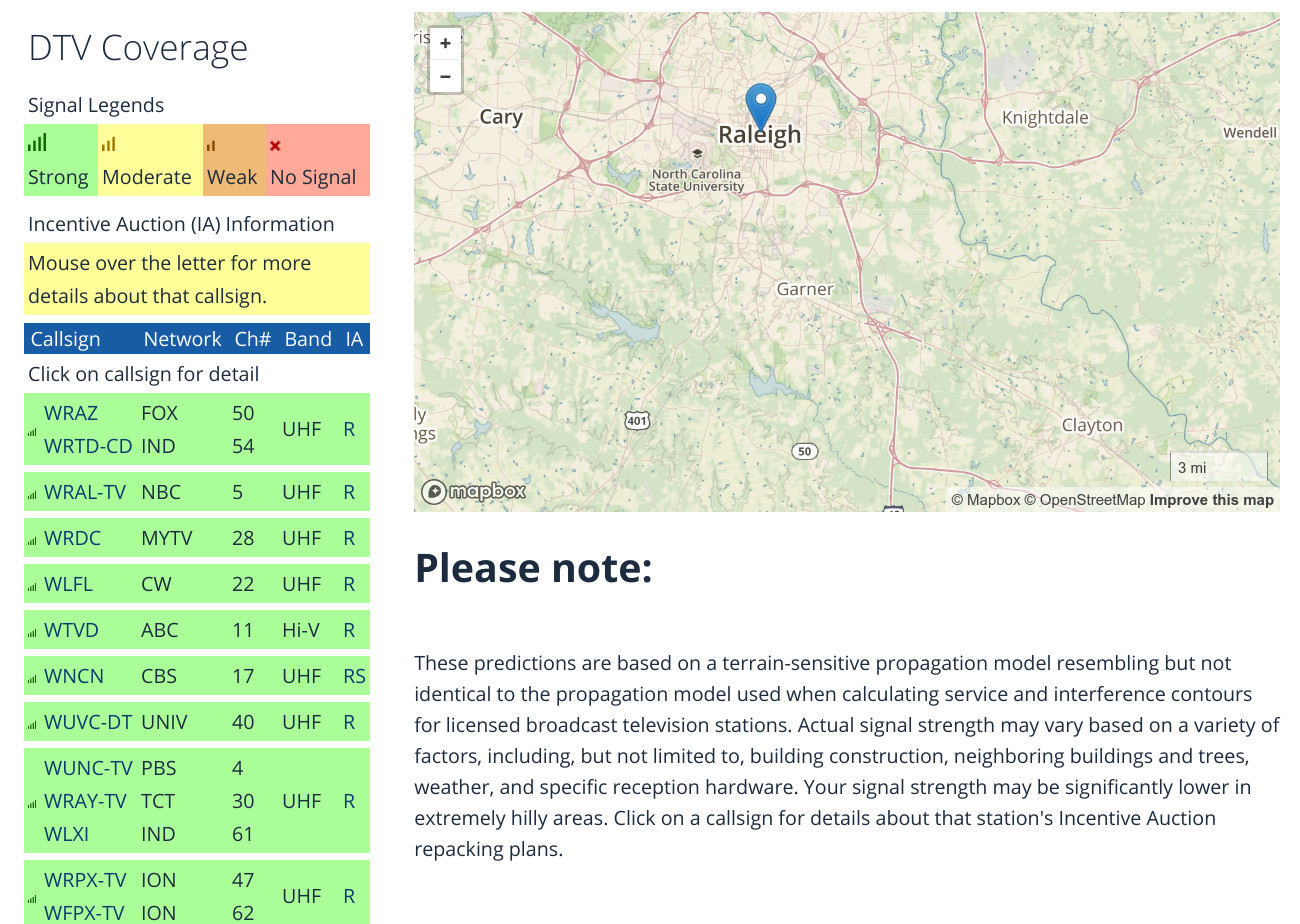
Courtesy of FCC.gov
Before you run off to Best Buy or Amazon to purchase an antenna, the first thing you should do is make sure that you can reliably receive OTA signals. The FCC website is the easiest place to check which channels are available to you. Type your home address into the box at the top of the screen and it will show you a list of all the TV stations you should theoretically receive. The channels highlighted in green are the ones you should be able to pick-up with little effort. Yellow means it’ll be a little harder and you may need a higher quality antenna aimed just right. Brown means you probably won’t be able to get the signal without some serious equipment.
As you can see from the first image, the location I entered should easily receive every major channel (Fox, NBC, ABC, CBS, PBS). This is a good sign that I can get by with just about any antenna.
Now look at the next map:
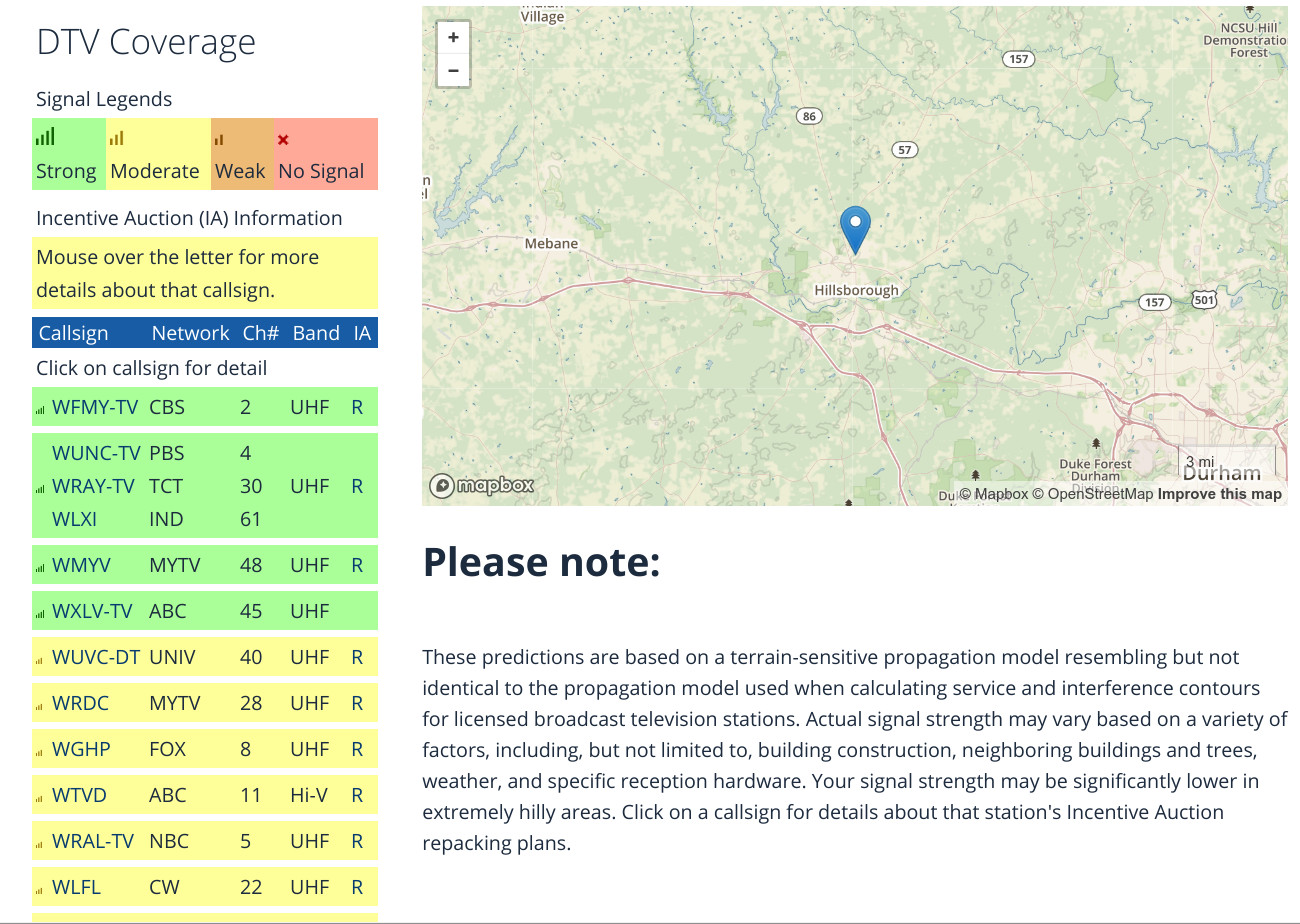
Courtesy of FCC.gov
Several stations are yellow, which means they’ll be more difficult to receive (but not impossible!). You’ll also note that there are multiple ABC stations. That’s because this location is receiving signals from two different cities. With a powerful enough antenna, you can pick up both of those ABC stations and watch the local news from two different towns!
Once you’ve confirmed that your location can receive all the major channels, it’s time to pick an antenna.
How to Choose an Antenna
A search on Amazon for TV antennas yields thousands of options. How do you pick the right one?
The answer is: “There is no right antenna.” Your location and how you aim your antenna has much more influence on your ability to receive broadcasts than your choice of antenna. It’s also why you can’t let the antenna reviews on Amazon guide you to a choice. Because one person’s 1 star review could be due to where s/he was located rather than the quality of the antenna itself. The only reviews that matter are objective, head to head testing done by independent researchers (or journalists, as is usually the case), such as this one. But keep in mind, if you are located in an area with good signal, and all of the channels on the FCC website are green for you, then any antenna will work just fine - get the cheapest, most popular one, like this one.
If, however, you have lots of yellow channels, then you’ll need a quality indoor antenna or a good outdoor antenna. For indoor, I’d recommend the Mohu Leaf. For outdoor or attic mounting, the ClearStream 2V. The ClearStream 2V will likely get a little better signal, but is harder to mount and is much more conspicuous (i.e. ugly) than the Leaf.
Finding the TV Towers
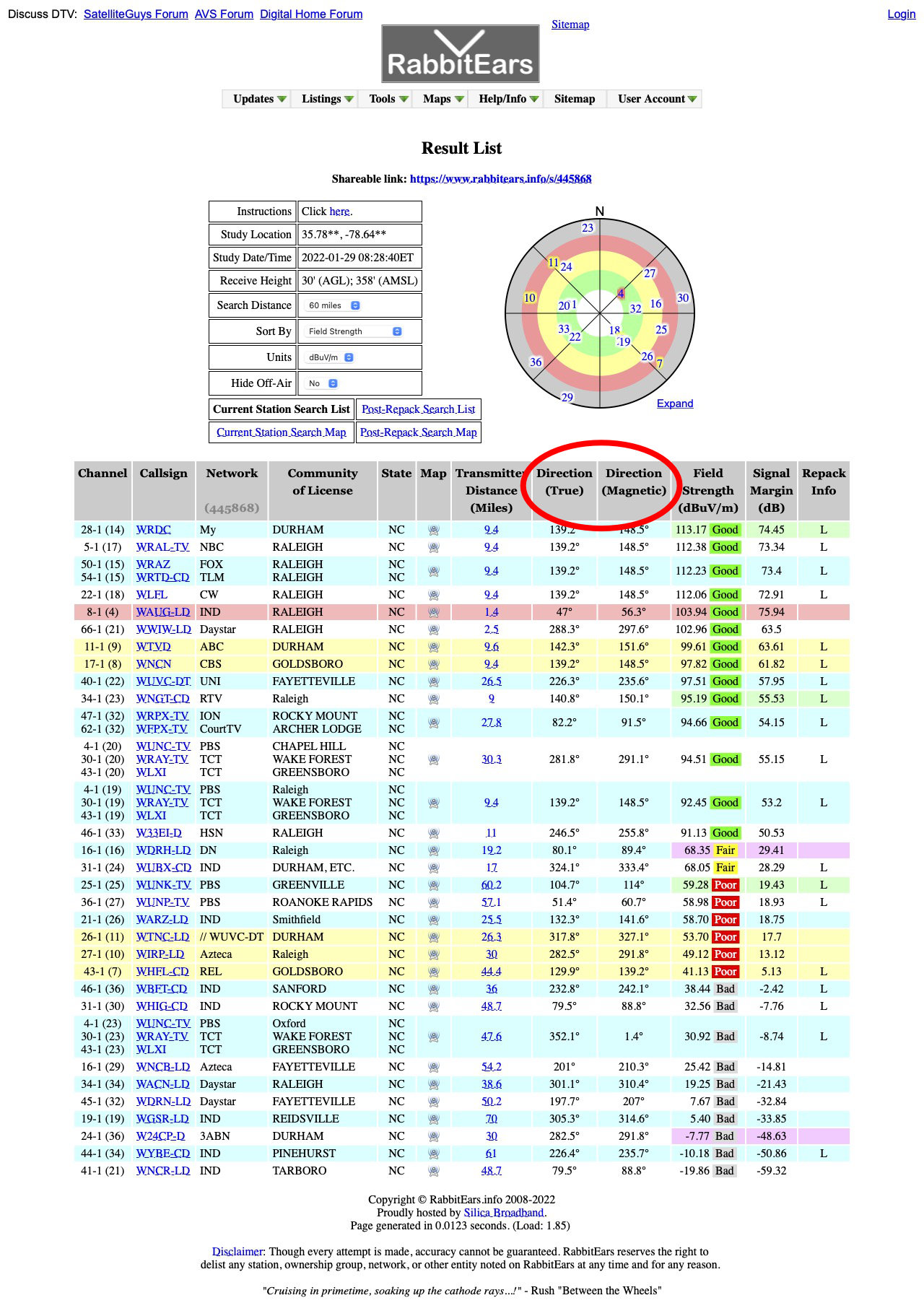
Courtesy of RabbitEars.info
Before you slap that new antenna on a wall, you’ll need to figure out where the TV towers are. There are several websites that show you, but none of them are easy to use. A decent one is RabbitEars.info. Another good one is otadtv.com. These websites let you put your addresses in the searchbox, then show a list of TV stations available in your area.
Importantly, they also show you the direction of the towers. If you click the image on the left (or above), you’ll see just how much information you get from RabbitEars.info, but for now, we’re only looking for the direction of the towers - which I’ve circled. RabbitEars.info shows both the “true” direction and the “magnetic” direction.
Now get a compass. You must have one one of those lying around, right? If not, you can download a compass app onto your smartphone. Note the “magnetic” direction from the RabbitEars.info table and point your compass in that direction. That’s where the towers are!
Often, all the major networks will be at roughly the same location - this particular signal map is from downtown Raleigh - you’ll see that NBC, Fox, CBS and CW are all at exactly 148.5°. That’s because the transmitters for those stations are all on the same tower! ABC is at 151.6°, which is very close to the others, and in fact is on a tower adjacent to the other channels.
RabbitEars.info (and otadtv.com) also show the “Field Strength” or “Signal Strength” of each channel. This let’s us know how well we’ll be able to receive that signal. Green is good, much like on the FCC website from earlier.
Armed with all of this information, we can now find the best location for our new antenna.
Mounting Your Antenna
The general rule of thumb for mounting an antenna is you want it to be as high as possible, on the same side of the house as the towers. You want to minimize the amount of solid materials between the antenna and the towers.
There are three general locations for an antenna: Indoor, Attic and Roof. Which you choose will depend on the signal strength at your house and may also require some trial and error. Actually, it’ll will require a lot of trial and error.
Indoor
This is the easiest place to locate an antenna. Find a room on the side of your house that is toward the towers. You don’t want to place it in a room that is on the opposite side of the house from the towers, because the signal will have to go through multiple walls. Remember, we need to minimize the amount of solid materials between the antenna and the towers. Also, if you have a two story (or more) house, put the antenna in an upstairs room. Looking out a window is the best place, but if it has to go through a wall, that may work too.
If you purchased the ClearStream 2V antenna or any other “directional” antenna, you’ll want to aim it toward the towers. Looking at our example table above, we want to orient it at 150°. Take out your compass, find 150° and eyeball where you need to aim.

Courtesy of Mohu
If you purchased a flat antenna, like the Mohu Leaf, it does not need to be aimed like other antennas. However, you want to mount it so that it generally faces toward the towers and the large, flat surface can receive the most signals. It also helps to mount a flat antenna in a room that has a window that faces the towers. Flat antennas work by picking up the “flood” of bounced signals, and most of the signals come through windows, rather than walls. You may still be able to pick up good signals if you mount the flat antenna in a room opposite the towers, but the signals will be weaker since they have to travel through more ‘stuff.’
Attic
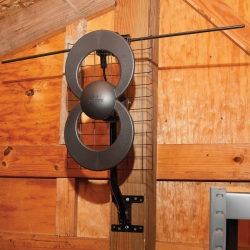
Courtesy of Antennas Direct
The attic is usually the best place to mount an antenna, but requires quite a bit more work. If you only have a few green channels and a bunch of yellow channels in your RabbitEars table, then you may want to start with an attic mount rather than indoors.
An attic mount will give you much better signal reception because it’s higher in the house and there’s generally less “stuff” in the way (unless your attic is a mess..) - without insulation or extra walls.
When you mount your antenna in the attic, try find a spot that is not obstructed by roofing shingles. The tar based roofing shingles in most houses degrade the signal more than wood or even aluminum siding. But if your signal is strong enough, the shingles may not matter.
Roof
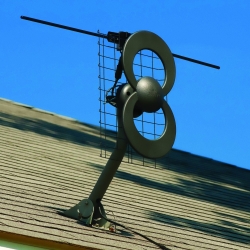
Courtesy of Antennas Direct
If you are further from the towers and most of your channels are yellow or brown on the FCC website, mount your antenna outside on a pole or on the roof. Make sure the antenna has a clear view of the towers (some trees are OK, but you’ll want to make sure your antenna is clear of the roof - i.e. you don’t want the roof blocking the signal). You also need to ground the antenna - this is very important. I won’t go into the specifics on this, but most outdoor antennas come with instructions on how to ground it. If you mount your antenna inside your house or in the attic, you do not need to ground it - which is why an attic mount may be better.
In all of these cases, mount your antenna in a way that it can be easily removed, because the location you choose may only be temporary.
Now it’s time to test!
Testing your Antenna Signal
Run a coaxial cable from the antenna to a television. If your antenna is indoors, this is pretty easy, just run the cable directly to a TV in the same room. A small flatscreen is pretty light and can often be placed right next to the antenna.
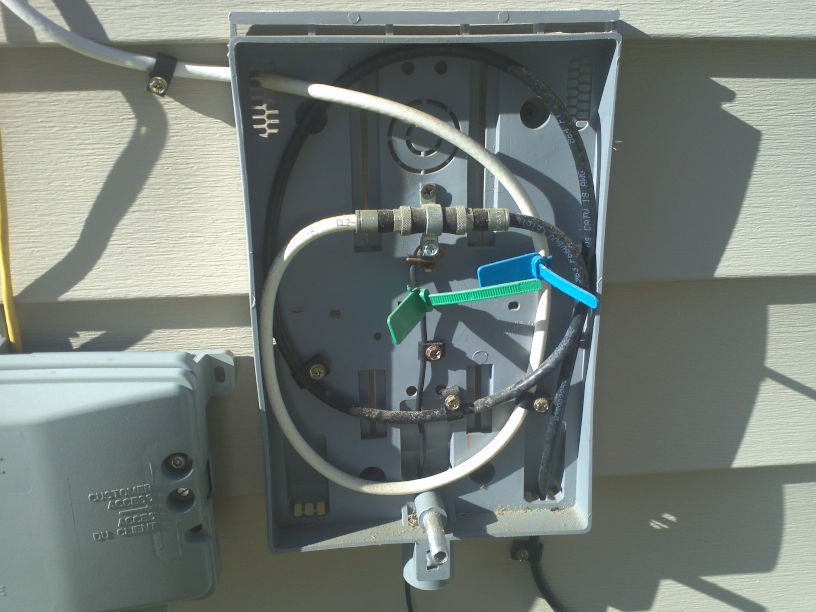
Cable junction box with end to end connector
If testing an attic or roof location, it gets a little more complicated. You need to get the signal to a TV somewhere in the house. The best option would be to take a small flatscreen into the attic or on the roof and connect it to the antenna (you would need power up there, of course). Another option is to run a coax out of the attic and to a TV in the main part of the house. Or you could run a cable outside the house to the cable junction box, then use an end-to-end connector to send the signal to a cable jack near a TV.
With your coaxial cable connected to a TV, turn it on and go to settings. Then find an option to “Scan for Channels,” “Auto Program” or something similar. Make sure to select “Air” or “Antenna” and not “Cable” before you do the scan. Run the scan and see what you get.
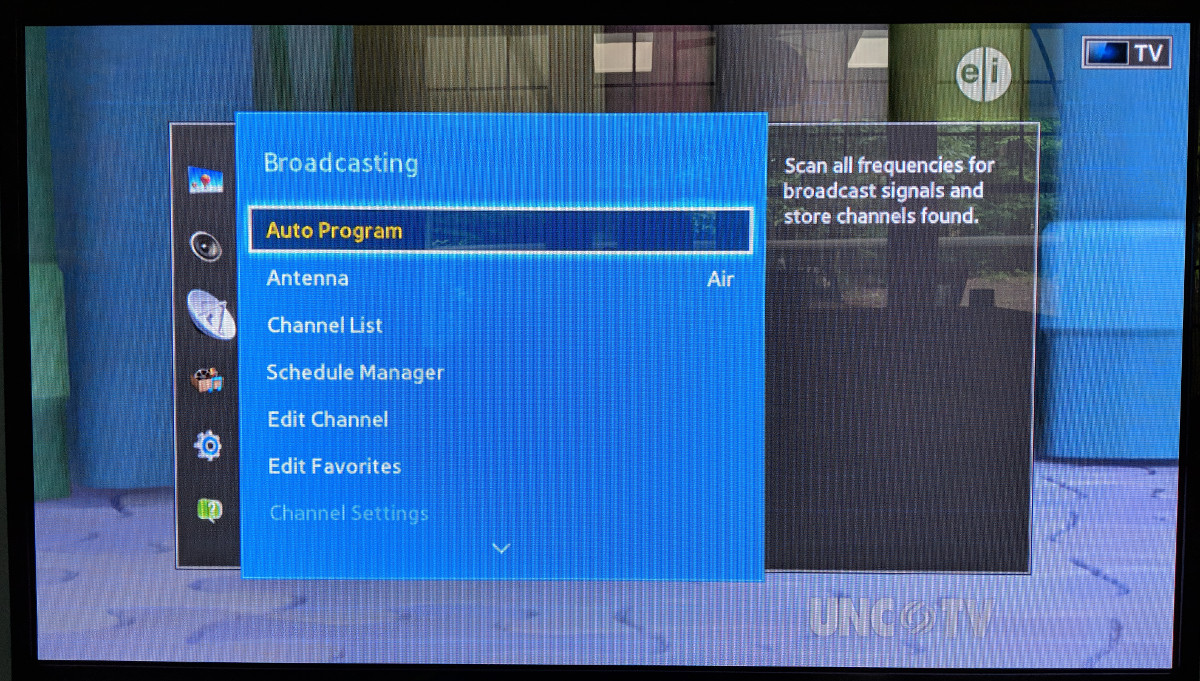
Hopefully, you’ll get a bunch of channels. Check each channel it found. Make sure you were able to receive all of the major broadcast networks (ABC, NBC, CBS, Fox and PBS) and some of the other major ones, like the CW and ION. Then refer back to that first online search you did at the FCC website. Make sure you are receiving all the channels that the FCC said you should. Also, if your TV supports it, check the signal strength of each channel. Make note of any that are low.
At this point, there is a very good possibility that you are missing one or two channels. Or maybe some channels have a very low signal strength and get “blocky” or distorted. You’ll need to do a little detective work figure out why they didn’t come in.
Look at your previous research and find the channels that don’t come in on those charts. Make note which direction those channels come from and if the channel is UHF or VHF (Also called HI-V).
In our example channel list above, PBS comes from the opposite direction as all the other channels (291.1°). If I can’t get PBS, I’ll need to reorient my antenna so it can better see the PBS towers, without losing sight of the rest. If I’m using the ClearStream 2V, I might move it to a place where PBS is blocked by fewer walls. Or if I’m using the Mohu Leaf, I might move it to a place that can see a door toward the front of the house as well as the rear window. Try a few different locations and every time you move your antenna, re-run the channel scan. I’ll repeat that again, because it’s important:
Every time you move your antenna, re-run the channel scan!
If your missing channel is a VHF channel and you have a directional antenna with rabbit ears (the two movable sticks), try re-positioning those sticks. (A tip for VHF - positioning the rabbit ears completely flat to the ground, i.e. horizontal, will better pick up the signal).
If you run your channel scan and get no channels, it’s likely that there is a problem with the coax cable or connections. Re-check that the cable is fully threaded into the connections at each end. And if that doesn’t work, try using a different cable.
You may need to move the antenna to another location entirely which is why it’s important to mount it in a way that’s not permanent.
Once you get a good signal to your single TV, then you can get fancy and route that signal through a junction box and distribute it to all the cable jacks in the house. If you decide to do that, you’ll need an amplified splitter like this one:
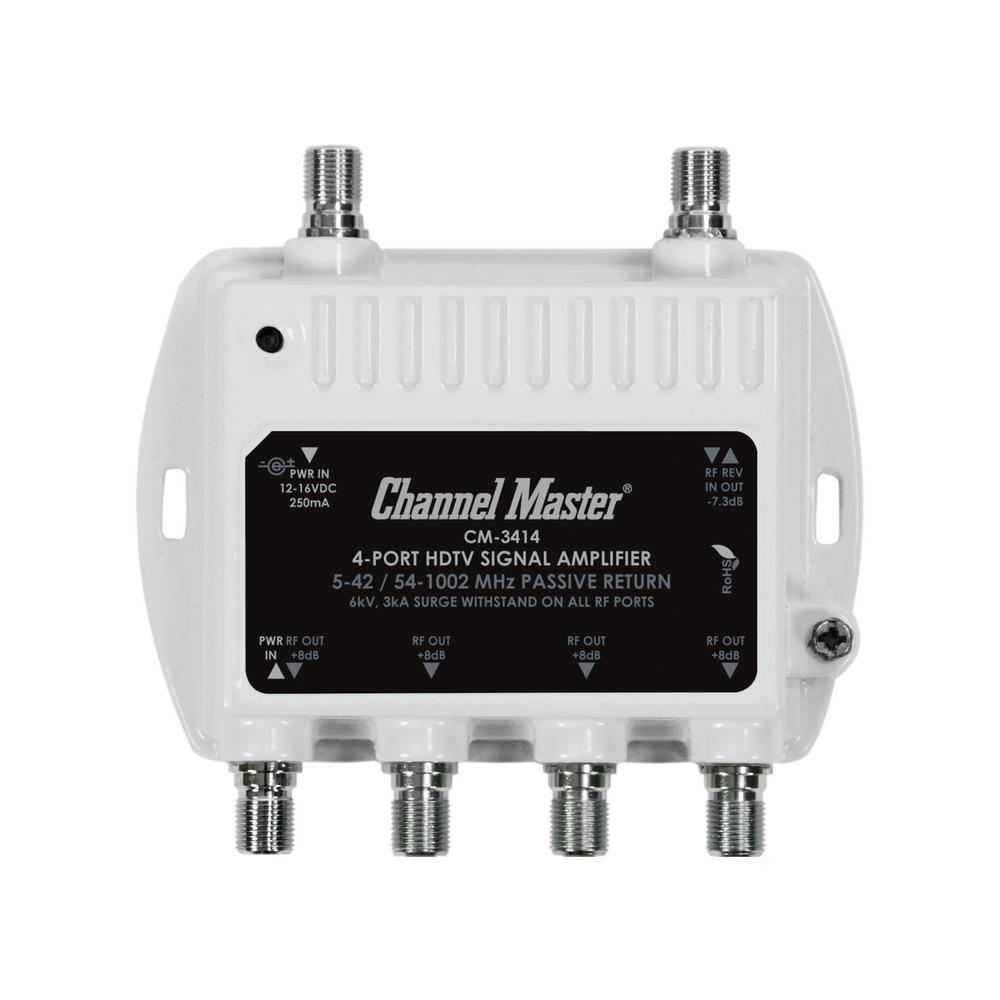
It may take many adjustments to get all the channels, but antenna aiming is kind of a black art. The old days of twisting the rabbit ears and standing on one foot while chanting to the TV gods never went away. Radio signals bounce off everything and can hit your antenna from every direction depending on what’s around it. But if you start with the above knowledge, you’ll go into the process having a much better chance of success.
